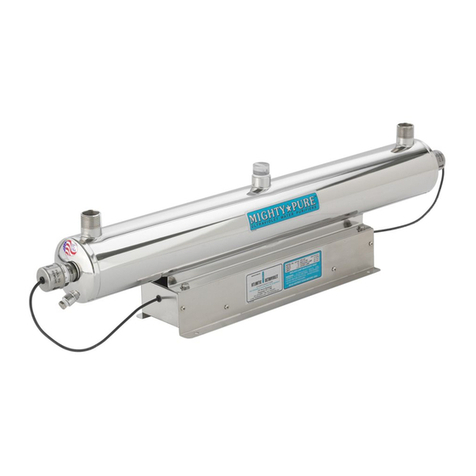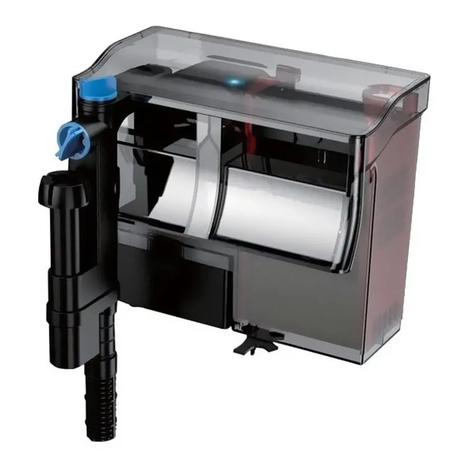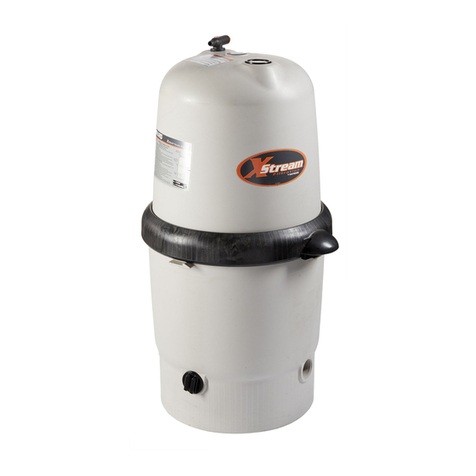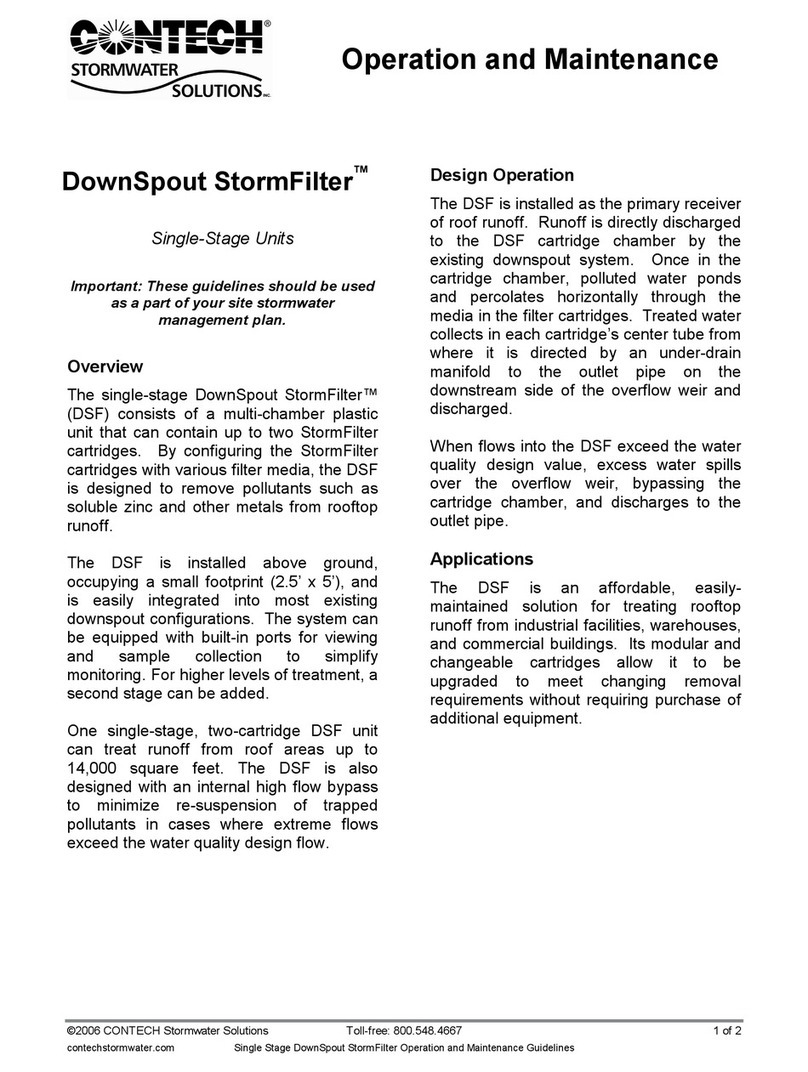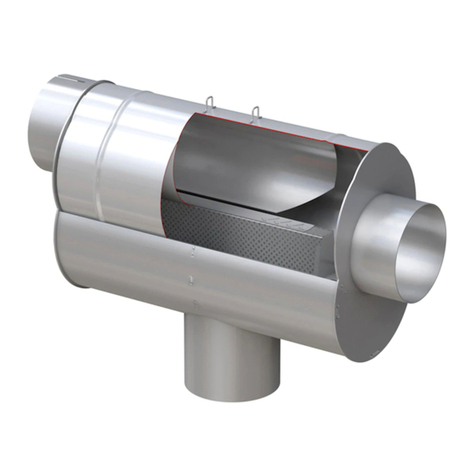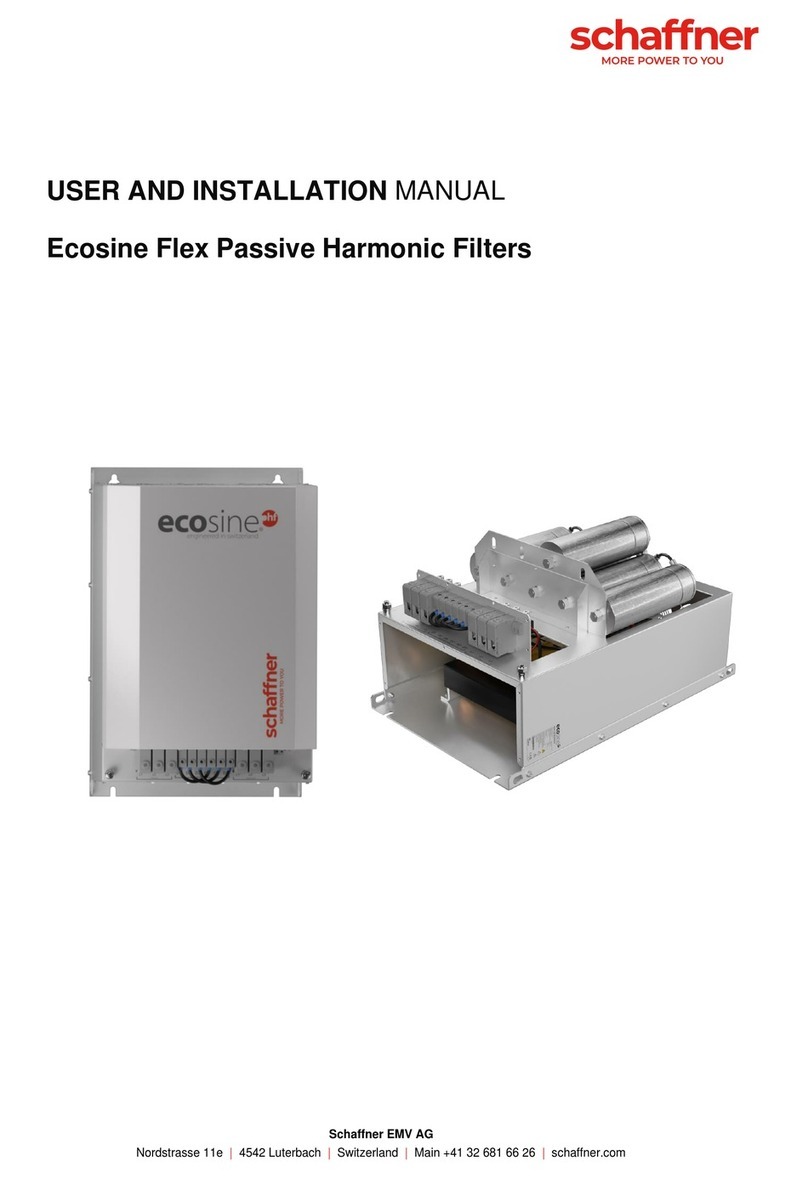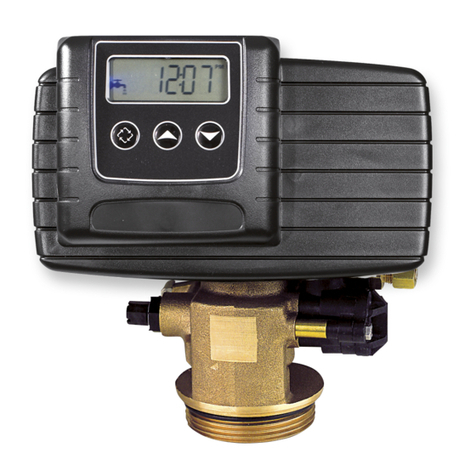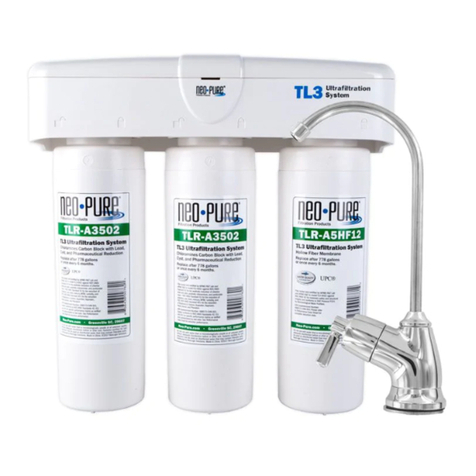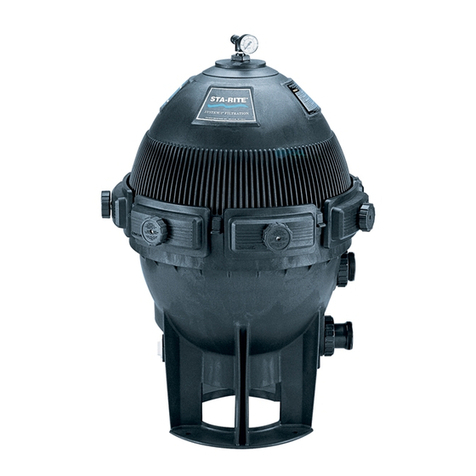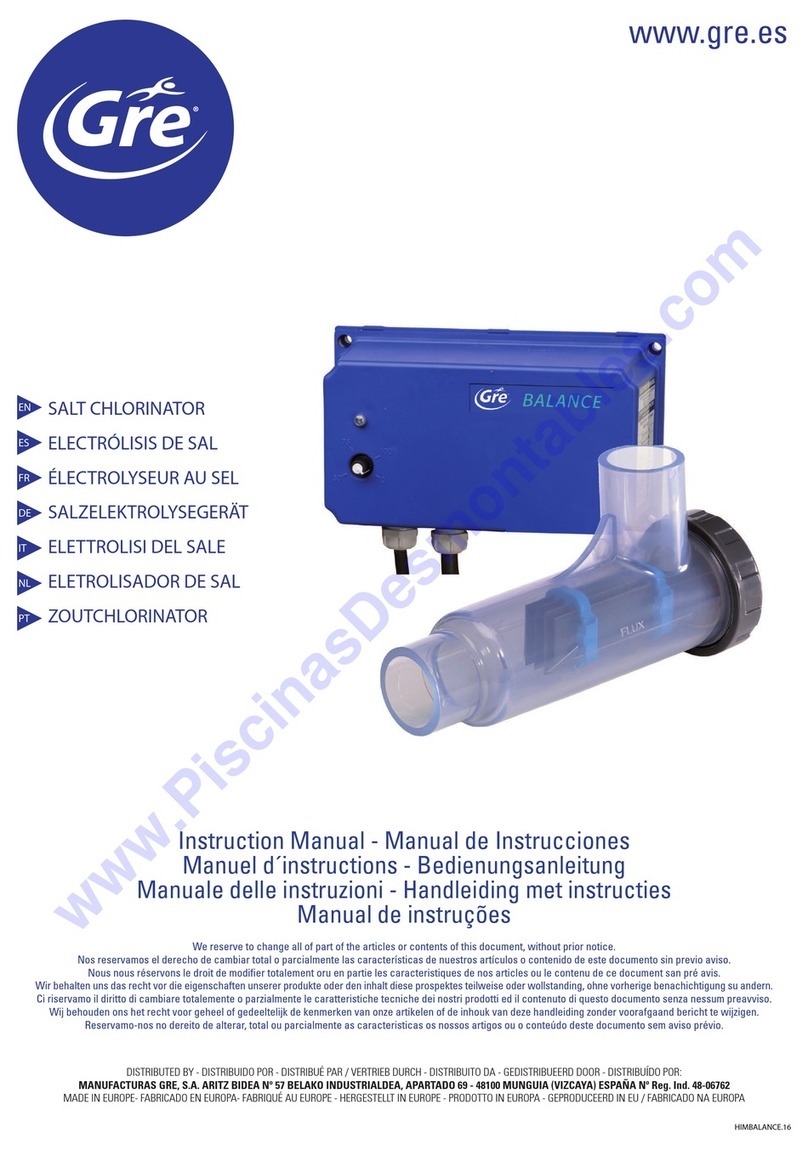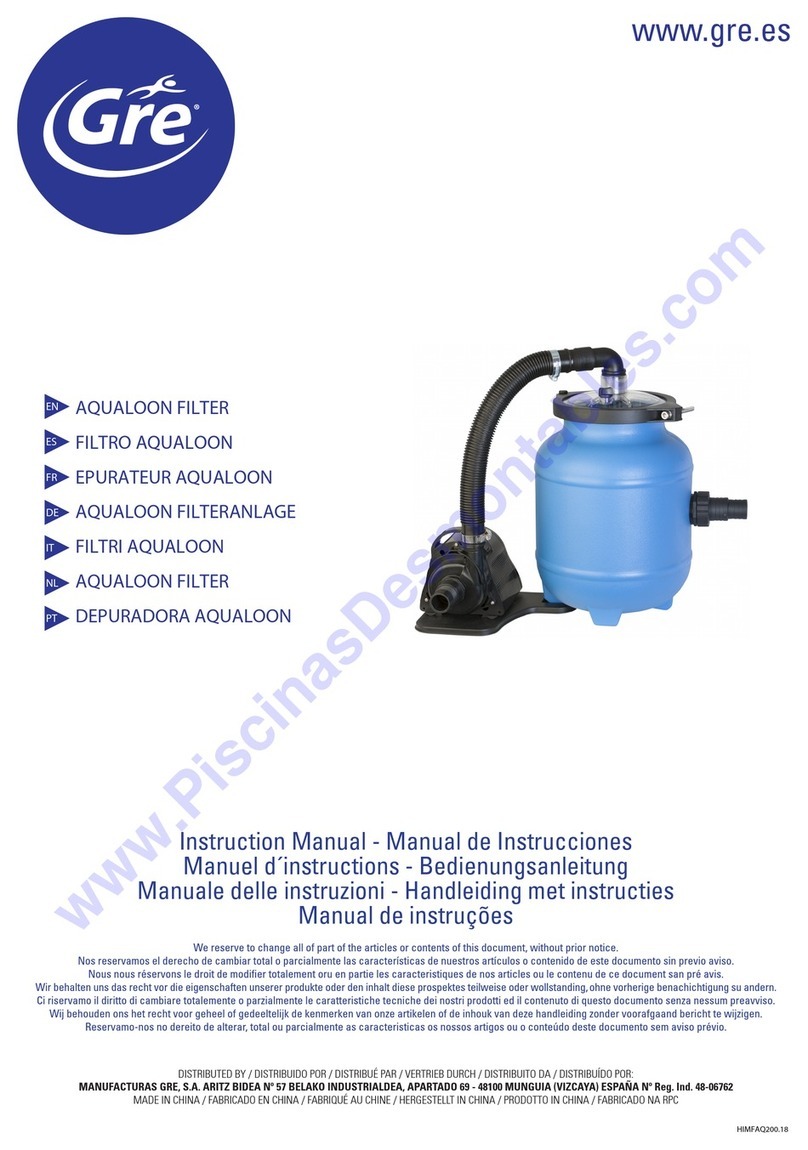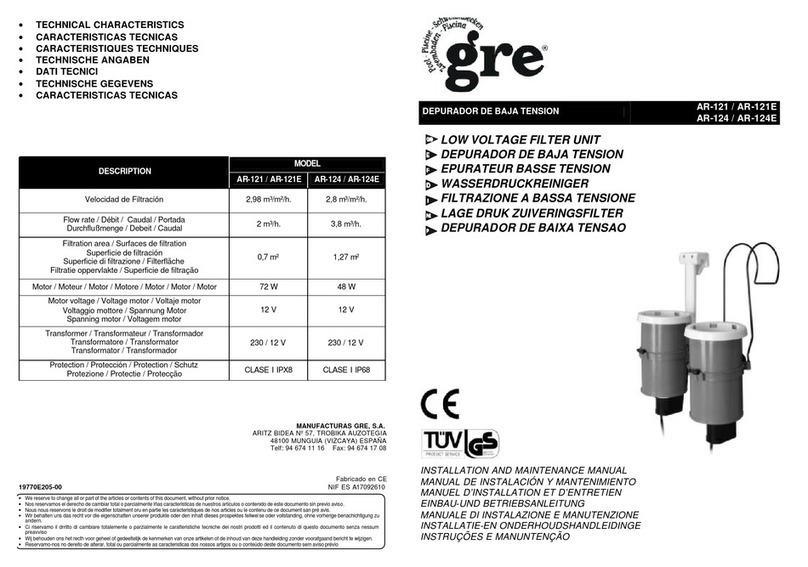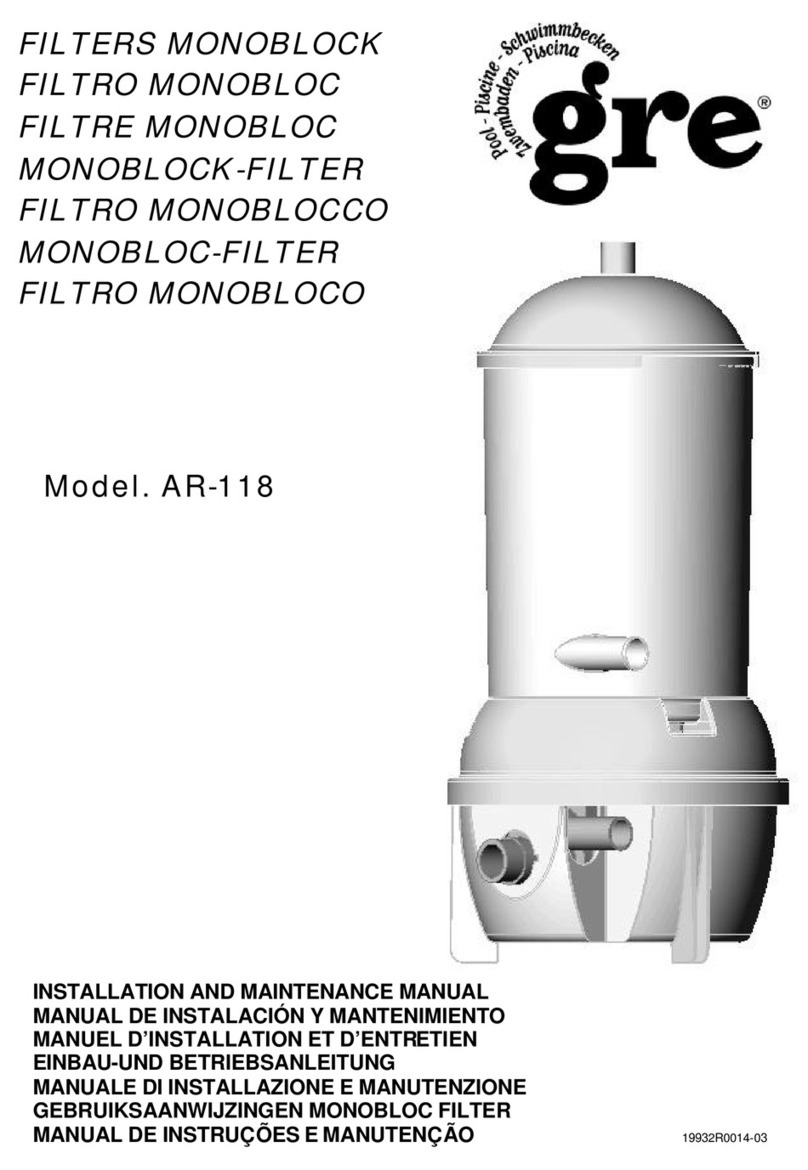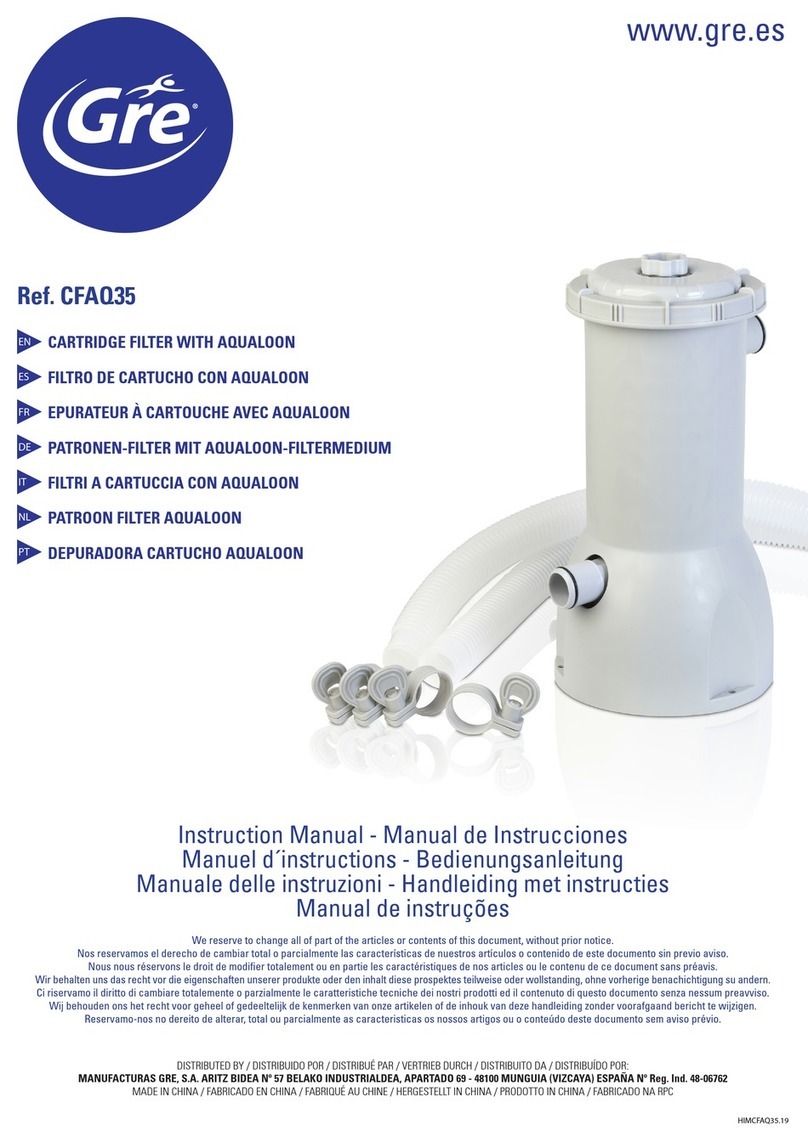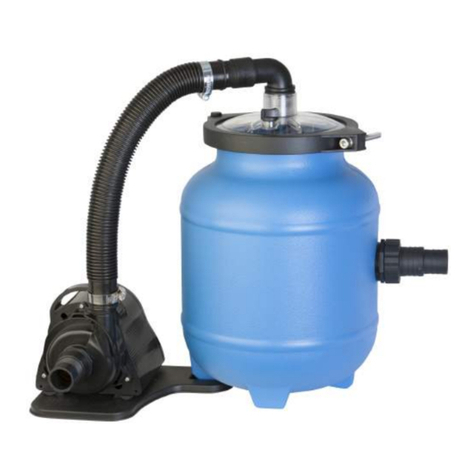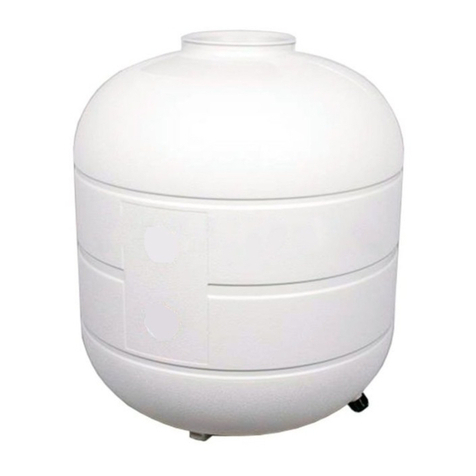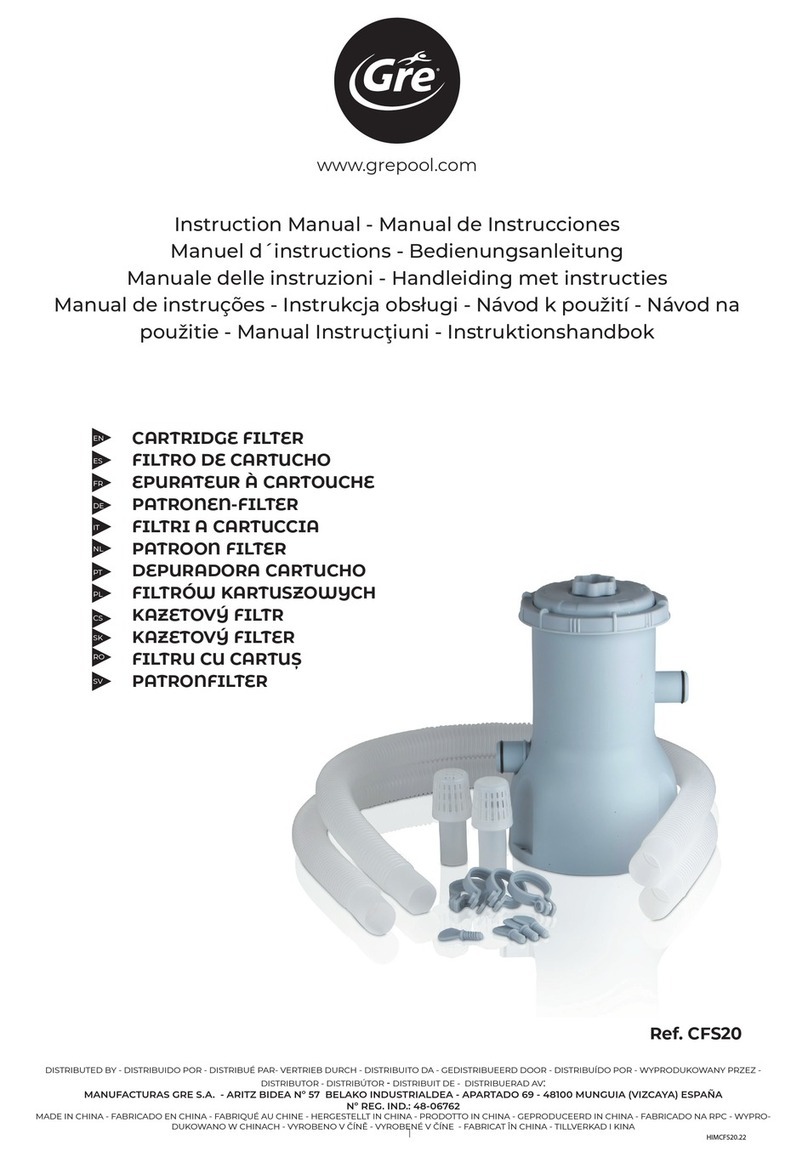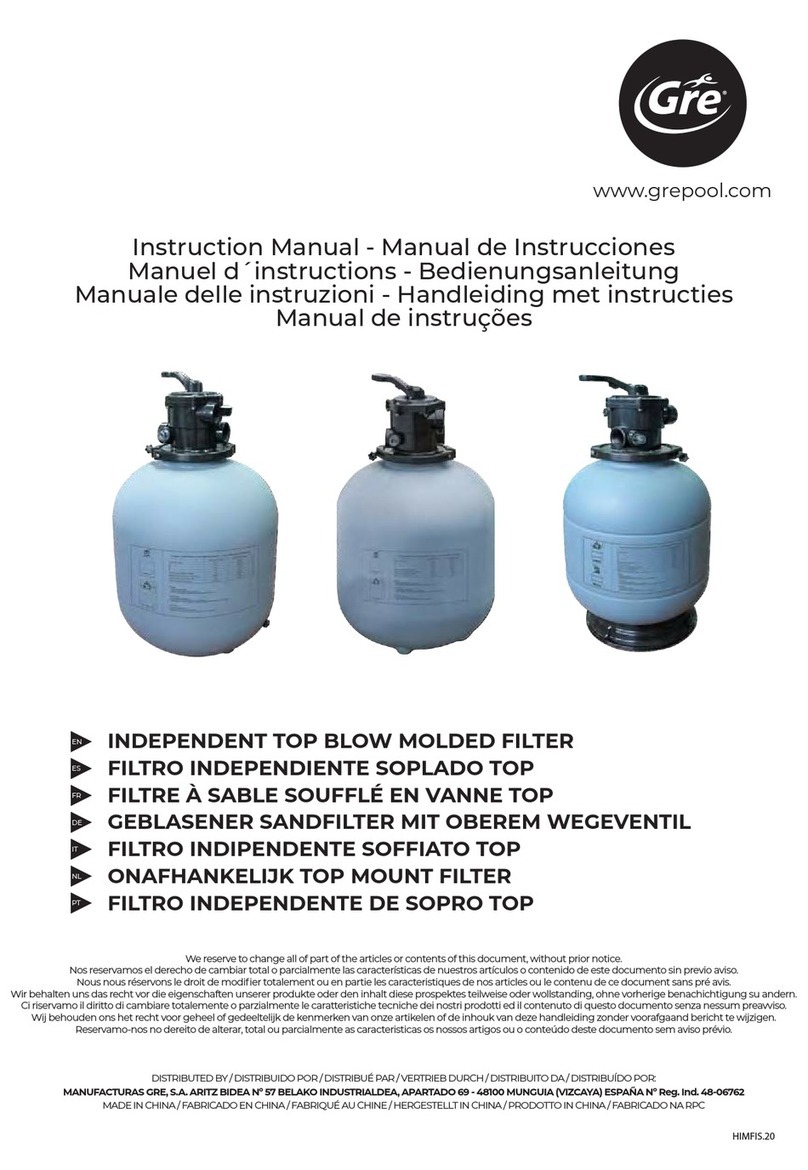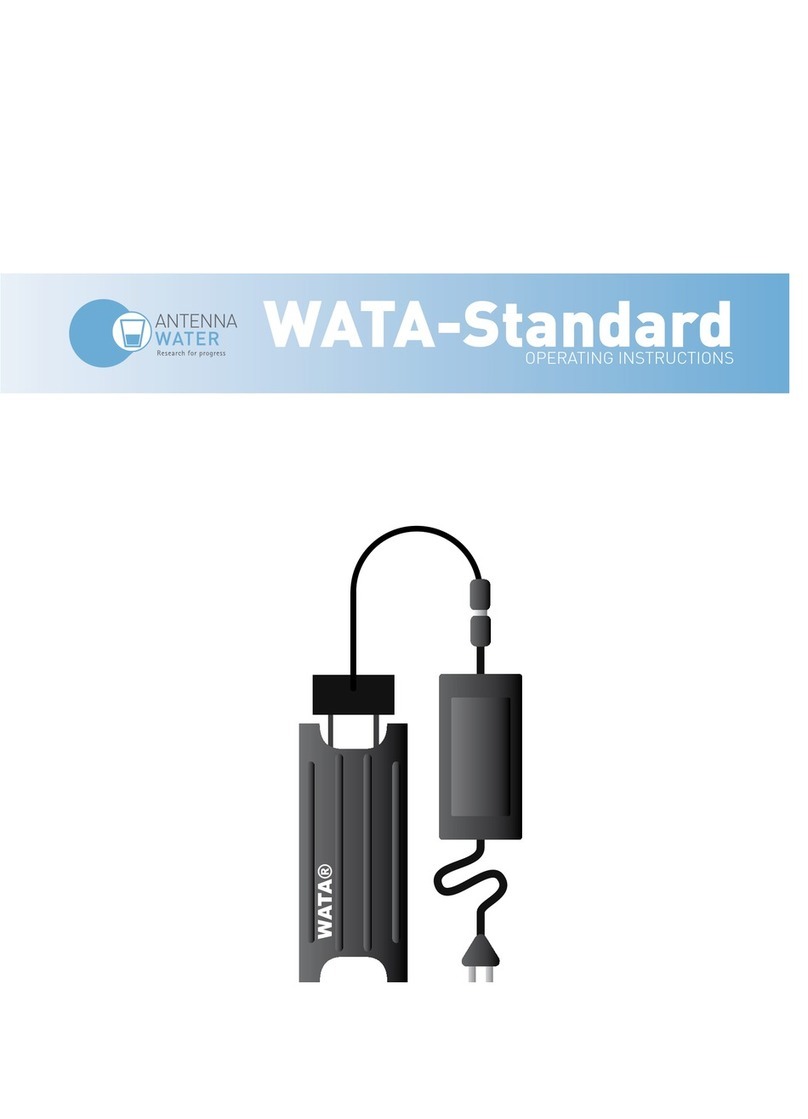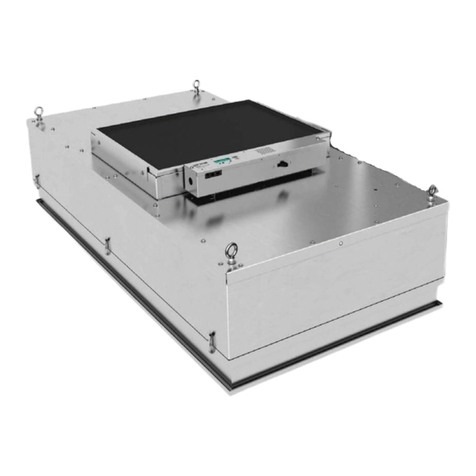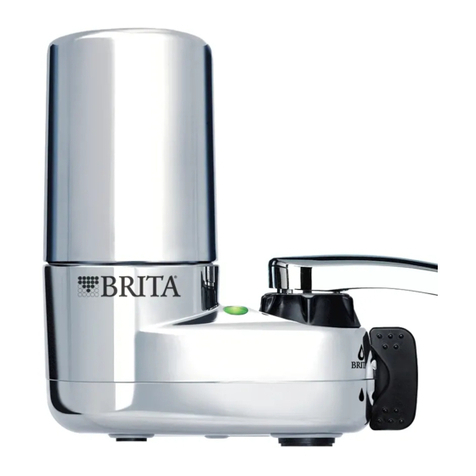8
• If you are going to refill the pool with water, first manually remove the remaining water without damaging the liner.
• If you are going to disassemble the pool, you can fold the bag with the remaining water in the centre and after removing
the plate, unfold the bag to empty it completely. This operation should only be done when you are disassembling the pool.
5.4.2. With self-supporting skimmer (for Magic Pool swimming pools):
Aside from the drain included within the pool, you can use the filter system to empty it:
• Raise the self-supporting skimmer until it is hanging outside the pool, to prevent water from entering the skimmer.
• Disconnect the suction hose from the skimmer inlet by the outer part of the pool wall. Loosen the clamp which secures the
hose carefully so that the liner is not damaged. Hold the hose so that no water leaks and it loses priming.
• Remove the hose, covering the end so it remains primed, and submerge it immediately in the pool.
• Weigh down the end of the suction hose of the skimmer inlet with a heavy object which will not damage the liner so that it
is forced to sink to the bottom of the pool.
• Start up the pump and drain the pool. Remember that the filter will not fully drain the pool. When the pump no longer sucks
in water, turn it off.
• If you are going to refill the pool with water, first remove the remaining water through the drain without damaging the pool.
THE HOSE SHOULD NOT CONTINUE TO APPLY SUCTION TO THE BOTTOM OF THE POOL LINER. THE PUMP MAY
BE SERIOUSLY DAMAGED IF IT OPERATES WITHOUT WATER CIRCULATION OR MAY DAMAGE THE LINER.
5.5 CLEANING THE BOTTOM OF THE POOL
To clean the bottom of the pool, you can use the unit's pump, using one of the following accessories:
• AR20637 or 08011 (a 32 mm diameter hose will be needed) for units FA6030 and FA6040.
• AR2064 (a 38 mm diameter hose will be needed) for units FA6050, FA6070, FA6080 and FA6100.
For any enquiries on warranties or after-sales service, please contact the vendor.
A hose which extends beyond the length required to reach all points of the pool is more difficult to use. Cut off the section of
the hose which is not needed. Check that the rubber terminals conserve their seal.
Priming the bottom cleaner hose:
Insert the bottom cleaner into the pool vertically, with the pole and the hose connected. Let it fill with water and keep the rest
of the hose outside of the water. Continue to insert the hose in the water slowly by 50 cm sections which should be submerged
at the same time as they are completely filled with water. Proceed up until the end, when the entire hose is filled with water
and submerged. If the hose is not fully primed, the bottom cleaner will not perform suction and the cleansing unit may be
damaged if it is forced to operate when it is empty.
Depending on the skimmer model (see specific manual), proceed as follows:
5.5.1. With wall skimmer (Dream Pool swimming pools):
• Place the suction cover accessory inside the skimmer with the inlet facing upwards, without removing the basket.
• Prime the hose.
• Pass the end of the hose through the gate of the skimmer from the INSIDE OF THE POOL, ensuring that no air gets in. Connect
it to the inlet of the suction cover, pressing it at a slant to create the join. Then insert it horizontally, introducing the hose
further. Pay attention not to damage the skimmer gate during this operation.
• The water level of the skimmer should be at a maximum and above the join between the cover and the hose to prevent air
from entering.
• Run the pump in the FILTER position and clean the bottom of the pool.
5.5.2. With self-supporting skimmer (Magic Pool swimming pools):
• Remove the upper floating ring from the skimmer and without removing the preliminary filtration basket, place the suction
cover accessory in the upper part of the skimmer with the inlet facing upwards and immerse the skimmer inside the pool
sufficiently to ensure that the suction cover does not take in air.
